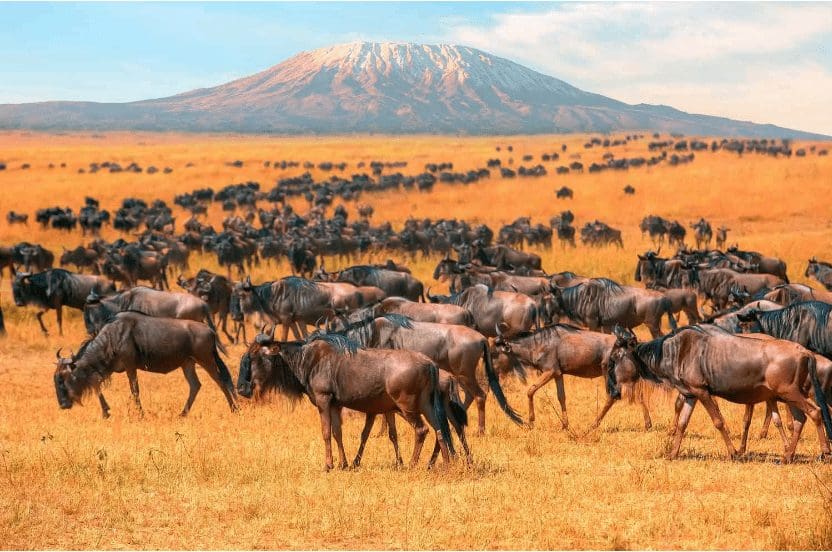The Masai Mara is one of Africa’s most famous safari destinations, renowned for its stunning landscapes and abundant wildlife. If you’re planning a trip, understanding Masai Mara weather is crucial to ensuring the best possible experience. The weather significantly impacts your safari, from game drives to witnessing the incredible Great Migration. Knowing the typical Masai Mara weather conditions, including temperature and rainfall patterns, will help you prepare for your journey and choose the ideal time to visit, maximizing your chances of enjoying an unforgettable adventure.
Overview of Masai Mara’s Climate
The Masai Mara is located in the southwestern region of Kenya, near the equator, which significantly influences its weather patterns. Thanks to its equatorial position, the Masai Mara enjoys relatively mild temperatures year-round, making it a great destination for safari experiences. However, the region’s weather can vary depending on the time of year, mainly alternating between two main seasons: the dry season and the wet season.
The dry season, from June to October, is characterized by warm days and cooler nights, offering excellent game viewing opportunities. The wet season, which occurs from November to May, brings both short and long rains, transforming the landscape into lush greenery but also making certain areas more difficult to traverse. Understanding these seasonal shifts will help you plan your trip more effectively.
Masai Mara Weather by Season
The Masai Mara experiences distinct dry and wet seasons, each offering unique opportunities for travelers. Understanding the seasonal weather patterns can help you choose the best time for your safari.
The Dry Season (June to October)
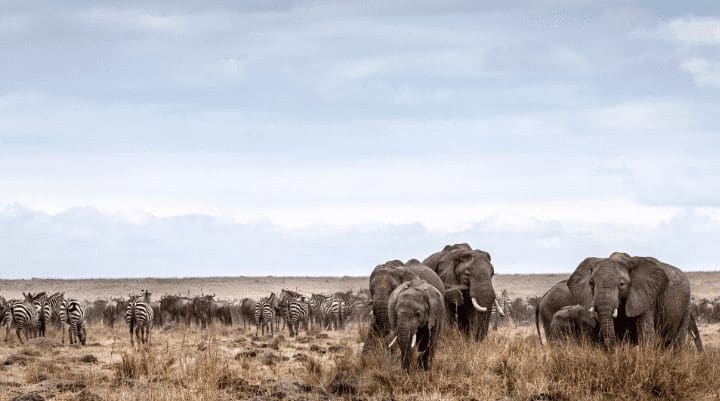
During the dry season, Masai Mara weather is typically sunny with minimal rainfall, making it an ideal time for wildlife viewing. Daytime temperatures are warm, while nights can be quite cool, so it’s important to pack accordingly. The dry conditions create open landscapes, allowing for easier game viewing as animals gather around water sources.
This period is also prime for witnessing the Great Migration, including dramatic river crossings, as millions of wildebeest and zebras traverse the Mara in search of greener pastures.
The Wet Season (November to May)
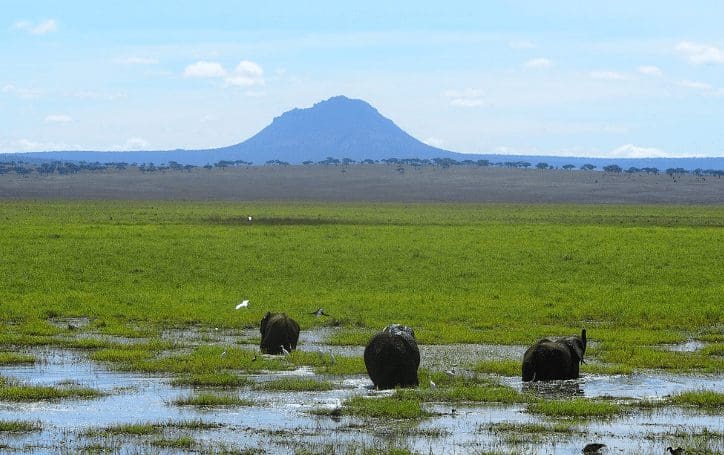
The wet season in the Masai Mara is divided into two periods: the short rains from November to December and the long rains from March to May. The landscape begins to green during the short rains, making for stunning scenery, while the long rains bring heavier downpours.
The rain can impact road conditions, making certain areas more difficult to access and may cause some travel disruptions. However, the lush vegetation draws out more animals, particularly newborns, and fewer tourists make it a quieter time to visit.
Best Time to Visit Masai Mara Based on Weather
The best time to visit the Masai Mara largely depends on the type of experience you’re seeking, with both the dry and wet seasons offering distinct advantages.
Peak Season: Dry Months (July to October)
The dry season, particularly from July to October, is the peak season for visiting the Masai Mara. During this time, Masai Mara weather is ideal for wildlife viewing, with sunny days, minimal rainfall, and cooler nights. The dry conditions reduce vegetation, making spotting animals congregating around rivers and waterholes easier.
This season also coincides with the Great Migration, where you can witness the iconic river crossings as herds of wildebeest and zebras dramatically navigate the Mara River. Overall, the dry season offers optimal conditions for safaris and ensures unforgettable wildlife encounters.
Low Season: Wet Months (April and May)
While the wet season, particularly in April and May, is considered the low season due to heavier rains, there are still unique benefits to visiting during this time. The lush green landscapes that follow the rains create a stunning backdrop for photography, and fewer tourists mean you’ll have a quieter, more intimate experience. Accommodation rates are typically lower, making it a more budget-friendly time to visit.
However, Masai Mara weather during the wet season can also present challenges, with muddy roads, potential travel delays, and reduced accessibility to certain areas. Despite this, the low season offers a more serene and scenic experience for those willing to navigate the weather.
How Masai Mara Weather Affects the Great Migration
The Great Migration is one of the most extraordinary wildlife spectacles on Earth, and Masai Mara weather plays a significant role in shaping this event. The movement of millions of wildebeest, zebras, and other herbivores is closely tied to the seasonal changes in rainfall and grass growth.
Seasonal Influence on the Great Migration
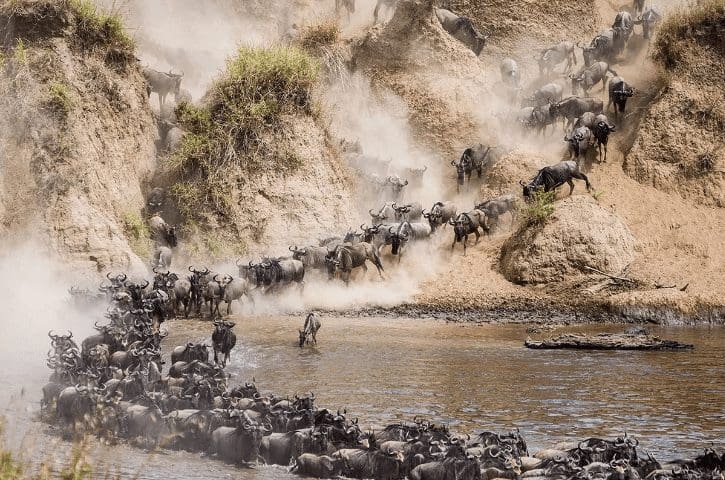
The migration is driven by the search for fresh grazing lands, which are influenced by the seasonal rains. As the rainy season replenishes the grasslands, animals move toward areas with abundant food. From July to October, during the dry season, the herds cross into the Masai Mara from Tanzania’s Serengeti in search of water and greener pastures.
This period is also marked by the dramatic river crossings, particularly at the Mara and Talek Rivers, where predators like crocodiles await. The dry conditions during these months make the river crossings easier to witness, as wildlife is funneled into specific areas in search of water.
To catch the most exciting migration moments, such as river crossings, plan your visit between July and September when Masai Mara weather is at its driest and the animals are on the move through the region.
Packing Tips for Masai Mara Weather
When preparing for a safari in the Masai Mara, it’s essential to pack according to the weather to ensure comfort throughout your trip.
What to Pack for a Dry Season Safari
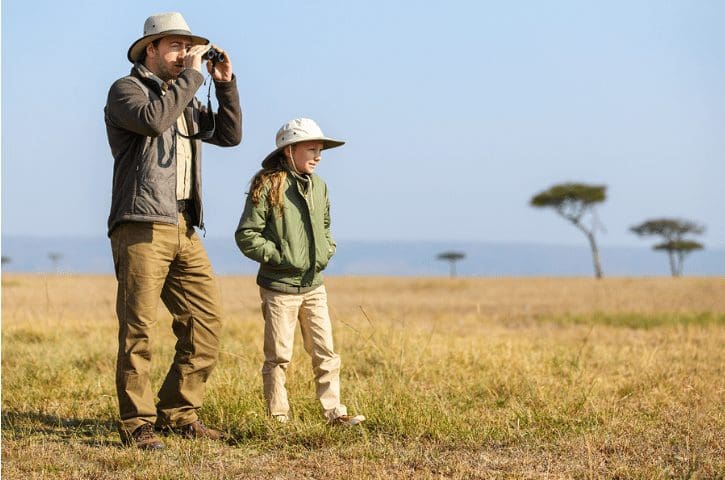
During the dry season, pack lightweight clothing made from breathable fabrics to stay cool during the warm days. Don’t forget sunscreen, sunglasses, and a wide-brimmed hat to protect yourself from the sun’s strong rays.
Evenings and early mornings can be surprisingly cool, so bring layers such as a light jacket or fleece to stay warm during game drives. Comfortable walking shoes are also a must for any on-foot exploration.
Packing for the Wet Season
For the wet season, waterproof clothing like a rain jacket is essential to handle the increased rainfall. Sturdy, waterproof shoes will help you navigate muddy terrains, and an umbrella may also come in handy. Given the higher humidity and presence of mosquitoes, packing insect repellent is crucial, along with long-sleeved shirts and pants to avoid bites during evening outings.
Weather-Related Travel Tips for Masai Mara Visitors
Planning your trip to the Masai Mara with the weather in mind can help you maximize your safari experience and avoid potential inconveniences.
Planning Around the Weather
When booking your accommodations, flights, and safari tours, it’s crucial to consider the Masai Mara weather patterns. The dry season (June to October) is the most popular time for safaris, so accommodations tend to book up quickly, and prices are generally higher. Making early reservations to secure the best lodges and camps is best. If you plan to visit during the wet season (November to May), you’ll find more availability and lower prices, but be prepared for potential travel disruptions.
During the rainy season, roads in the Masai Mara can become muddy and impassable, leading to delayed or rescheduled flights and safari drives. To avoid these issues, choose lodges with access to airstrips for charter flights, as they are less affected by the weather. Keep your itinerary flexible and allow extra time for unforeseen travel delays. Hiring experienced local guides familiar with the terrain during the wet season will also enhance your safari experience.
Plan Your Perfect Masai Mara Safari with The Mara Wanderlust
In summary, Masai Mara weather plays a crucial role in shaping your safari experience, influencing everything from wildlife viewing to travel logistics. The dry season, from June to October, offers the best conditions for witnessing the Great Migration and enjoying clear, sunny days. On the other hand, the wet season brings lush green landscapes, fewer tourists, and lower accommodation rates, though it may also lead to travel challenges due to muddy roads and rain.
When planning your trip, it’s essential to consider the weather to ensure an unforgettable adventure. At The Mara Wanderlust, we are here to help you navigate these conditions and make the most of your Masai Mara experience, offering expert guidance and personalized tour arrangements tailored to the season. Let us help you embark on a seamless, breathtaking safari.
FAQs
How hot does it get in the Masai Mara?
Temperatures in the Masai Mara typically range between 20°C to 30°C (68°F to 86°F) during the day. Nights can be cooler, especially during the dry season, with temperatures dropping to around 10°C (50°F).
Is it safe to travel during the rainy season?
Yes, it’s generally safe, but the rainy season can make roads muddy and harder to navigate. Travel delays are possible, so be flexible with your plans and choose accommodations with better access to airstrips for charter flights.
When is the best time to witness the Great Migration?
The best time to witness the Great Migration in the Masai Mara is between July and September, during the dry season, when wildebeest and zebras cross the Mara River in search of fresh grazing.
What is the weather like during a Masai Mara safari?
During a Masai Mara safari, the weather is generally warm during the day and cooler at night. The dry season offers sunny, clear days, while the wet season brings rain and lush greenery.
How does Masai Mara weather differ from other parts of Kenya?
The Masai Mara’s weather is more temperate compared to Kenya’s coastal or central regions. While the coast experiences tropical heat, the Masai Mara, due to its altitude, remains cooler with more moderate temperatures year-round.

